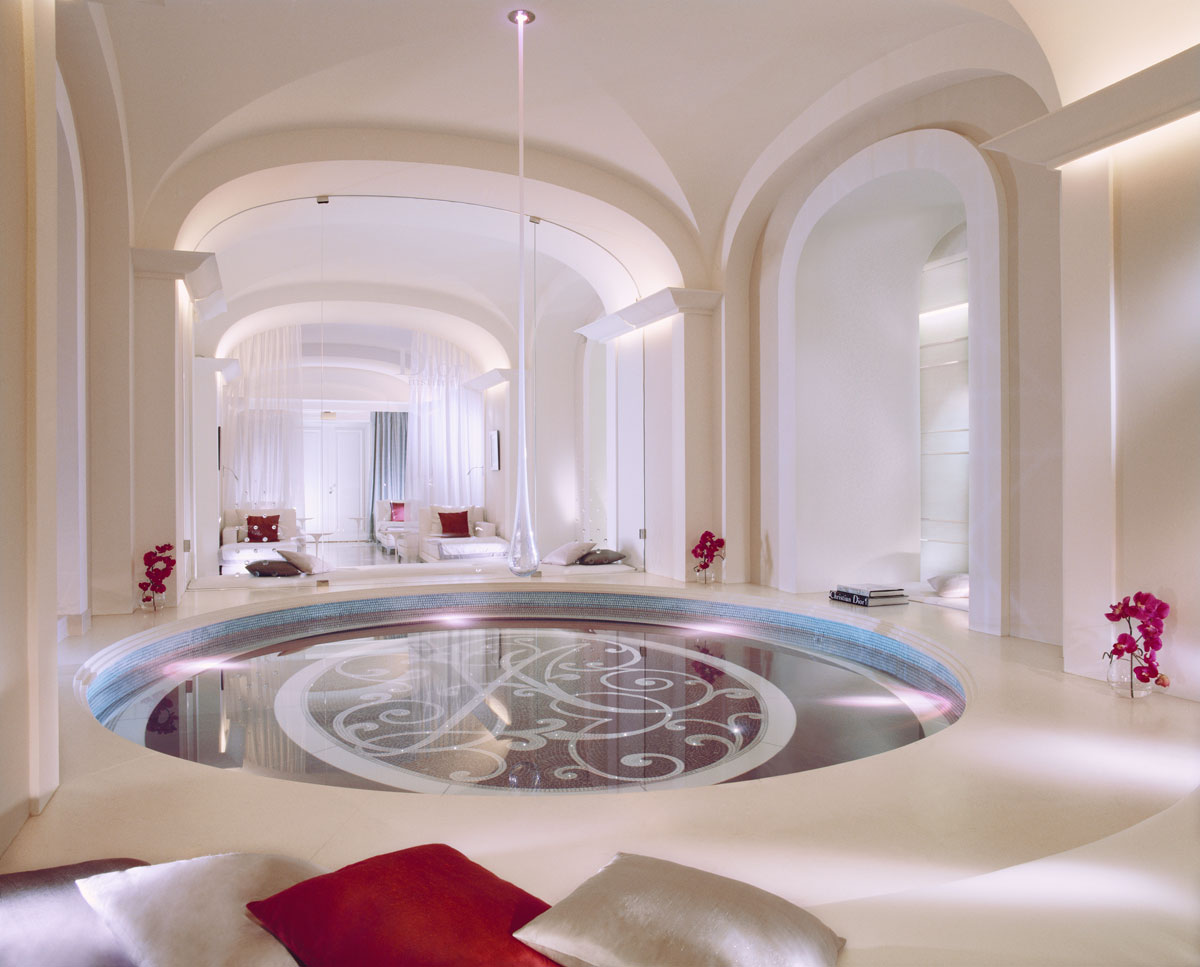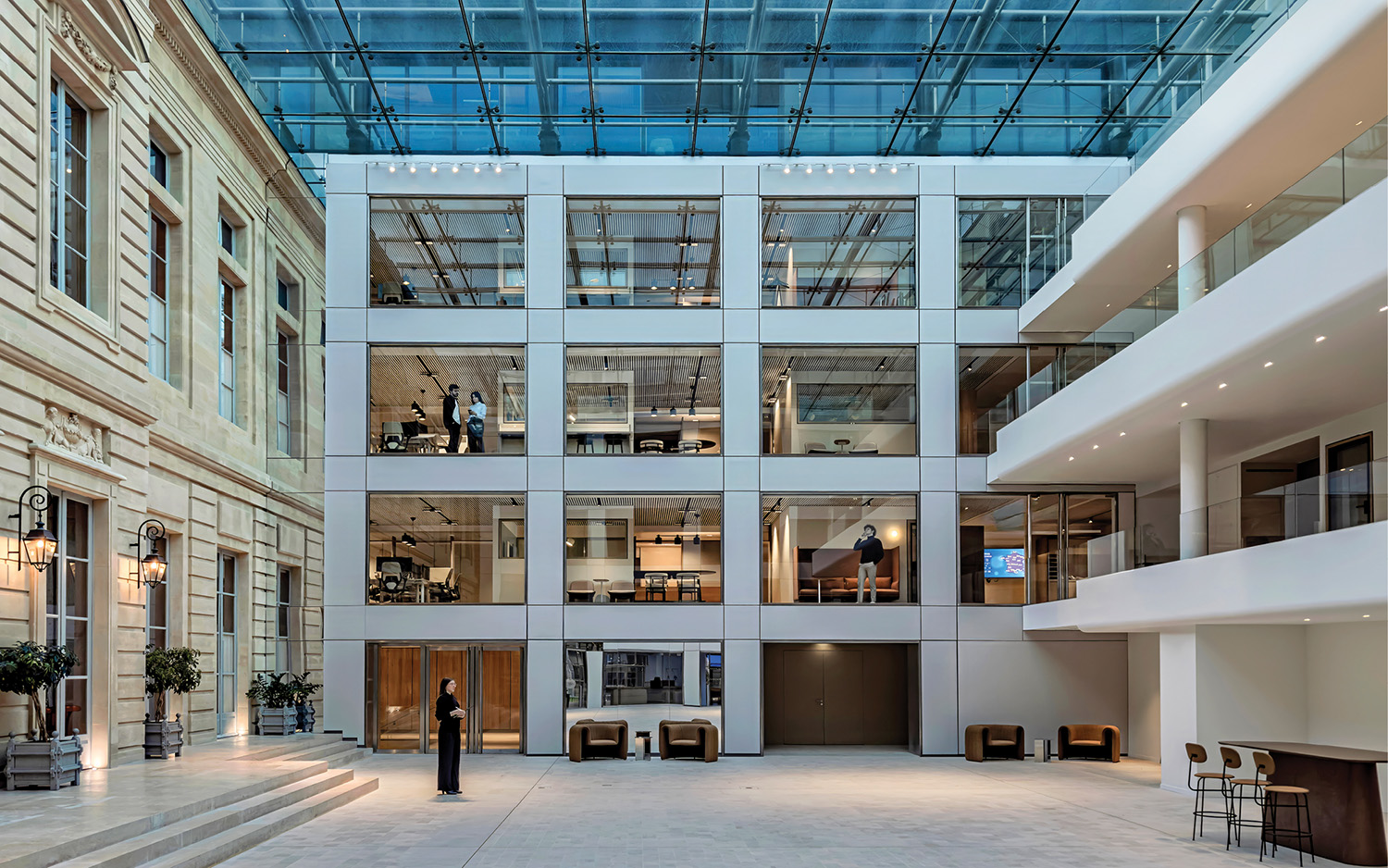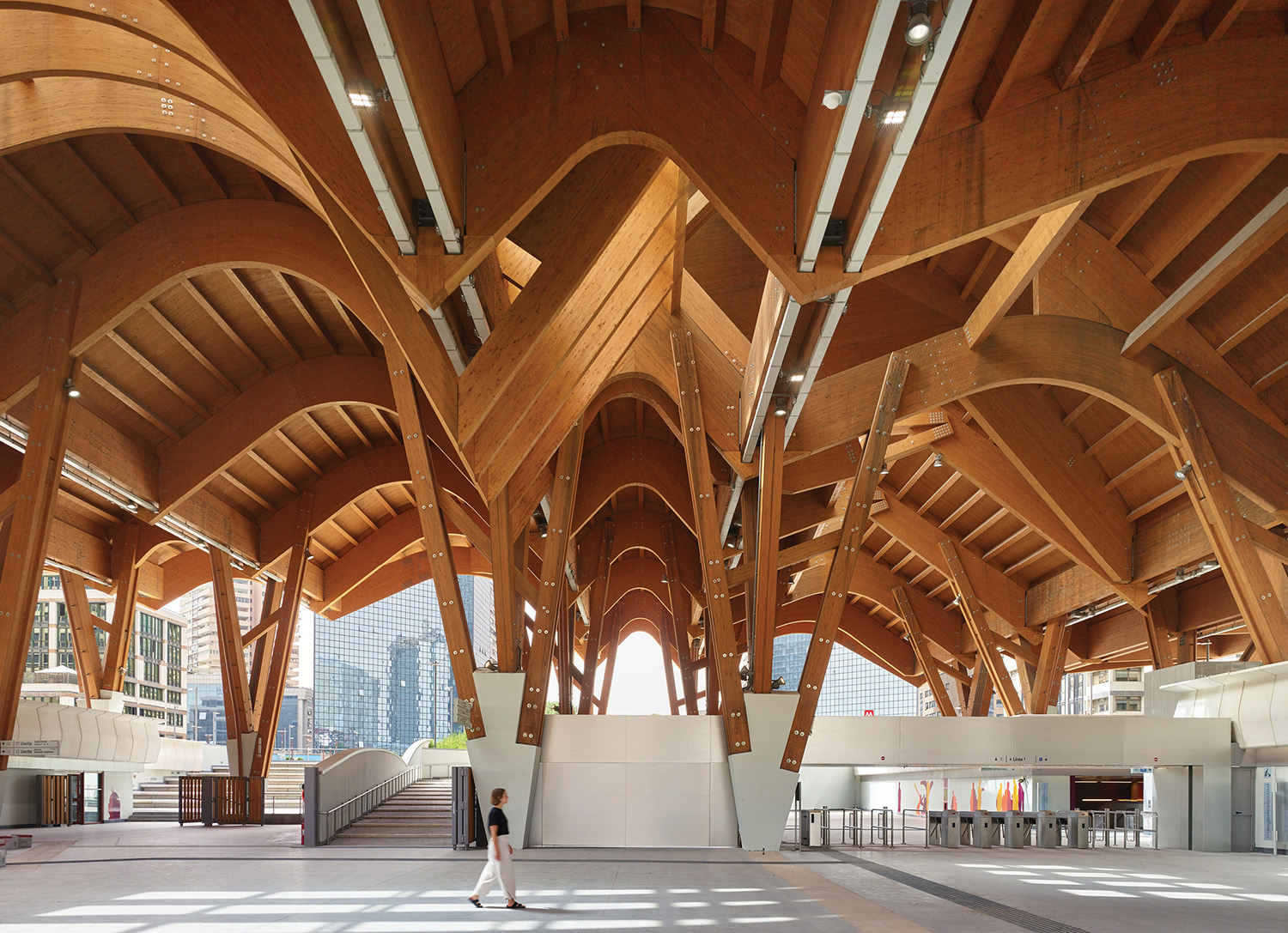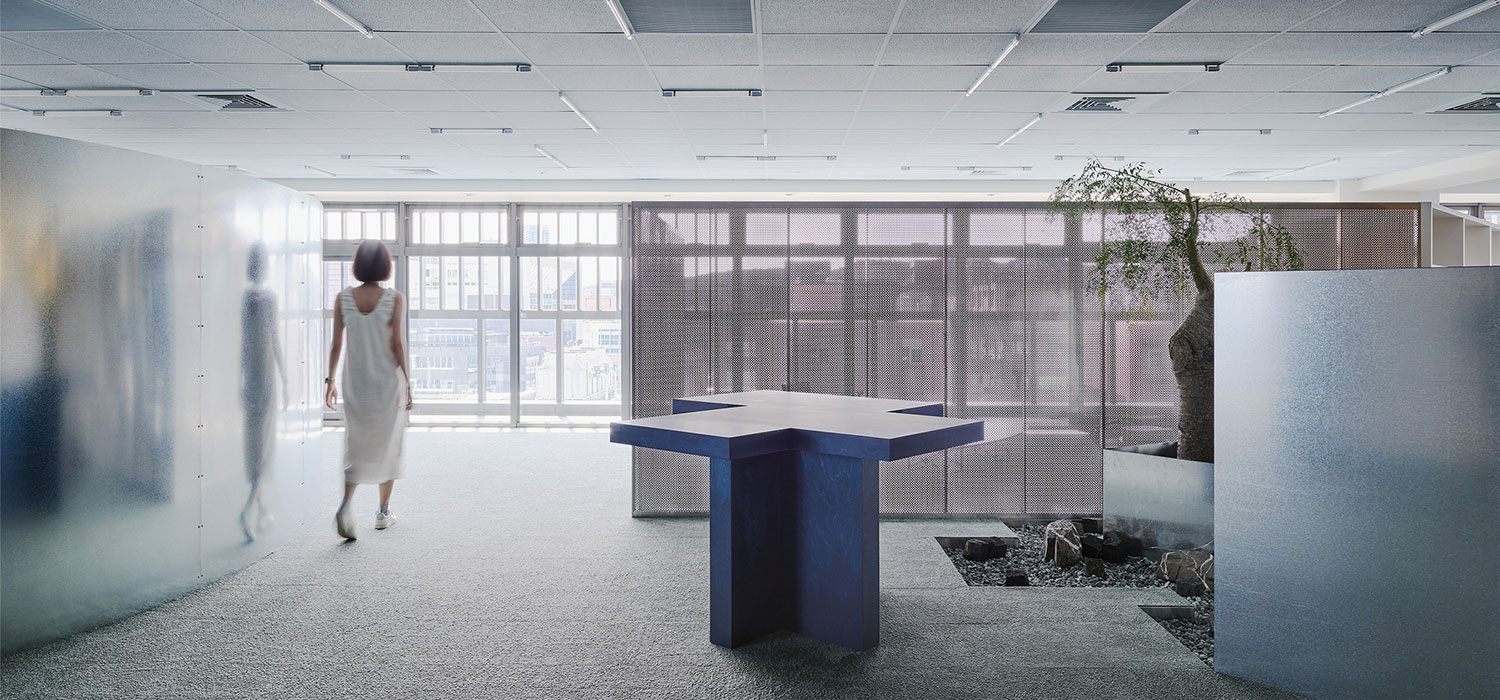The Renovation of Paris: 5 Luxury Hotels
These aren’t new builds with absolute freedom of structure and design. These are historic renovations, spectacular century-old buildings with many rules and laws, unexpected accidents (some happy), and thoughtful methodology. Yet not so long ago, the investments required by luxury hotel operators to realize these grand transformations seemed impossible.
In the 1990’s, says Richard Martinet, principal architect at the local Affine Design which specializes in high-end transformations, European palaces lived their last moments of glory. Lacking sufficient investments to bring them back to their original luxurious standards, Parisian palaces were withering too. Martinet, who has worked on hundreds of hotels, says each project begins with specific intent: “The method consists of meticulously scrutinizing the building in order to find its original components and understand the transformations it has undergone.”
That means digging into official, historical documents, layouts and photos, and on-site physical and technical investigations and analysis, to reveal treasures behind, say, false ceilings and partitions. “Our aim is not to restore old stones, we are not Heritage Architects,” say Martinet. So once history is assessed, the bones are addressed. In most of Martinet’s projects, infrastructure has not been updated for decades—roofs need work, windows need replacing, floor plans need to be reconfigured. Climate is now completely in control. Finally, interiors need alteration from elevator to restaurant to bedroom.
Today, it’s stunning to consider how the money was spent. We toured hotels across Paris, focusing on projects that opened and re-opened in the past half year. Here’s what we found…
1. Project: Hôtel Plaza Athénée 
Firm: Jouin Manku
Original opening date: 1913
For the high fashion-minded (Cesare Paciotti, Chanel, Louis Vuitton, Prada, to name a few) Avenue Montaigne is a well-known street. But in 1947 its only boutique was Christian Dior (#30), and the designer hosted his first ever exhibition of perfumes at the neighboring Hôtel Plaza Athénée (#25). Throughout the years he also named various pieces for the hotel. The relationship continues still, with the Dior Institute opening in the hotel’s haute basement, following a 10-month renovation that ended August 2014.
Opened in 1913 and continually updated, Le Plaza Athénée was one of the few recently opened/re-opened Parisian luxury hotels that didn’t actually need a renovation. They were simply following their couture instincts to continually be refreshed. The goal of the project, says a spokesperson, was to maintain the property’s atmosphere while administering a subtle “facelift” to reposition the property as “the Palace of Haute Couture” of Paris. The new ceiling of Le Bar – redesigned by Patrick Jouin of Paris-based Jouin Manju – resembles the tweed of Chanel jackets and nightly the front desk staff uniform is evening attire (gowns!). Jouin also worked on the Alain Ducasse restaurant with craftsmen from the Société nationale des Meilleurs Ouvriers de France (the best artisans in the country) creating tables made of wood, leather and stainless steel. And the playful, stunning “silver bells” surrounding a few tables, reminiscent of those used in aristocratic dinner services of the past. The shimmering reflection of the chandeliers on their sides is captivating.
Bruno Moinard redesigned the lobby, emphasizing silver and light (via chandelier, lamp and windows) to complement the wood paneling, bronze, marble mosaic floor, and brushed oak furniture. La Galerie des Gobelins, an appealing hallway with cozy nooks for breakfast, lunch and tea, follows that theme. Moinard also worked on the other restaurants and the event spaces, which are entirely new. In addition to refurbishment throughout, while closed the hotel added three buildings—59,000 square feet—to the original property.
The guest rooms have two décor styles: Art Deco (two floors) and Classical (six floors). Created by Marie-Jose Pommereau, a designer of private apartments, each of eight new suites and bathrooms has different décor, with details like grey-veined white marble, and hints of pink or violet. Some windows literally have “frames” surrounding “living pictures”—views unique to Paris, and this dreamy locale.
The Plaza Athénée turns 102 in April but like every worthy fashionista it’s her dress and modernity that shines brightest.
 2. Project: The Peninsula Paris
2. Project: The Peninsula Paris
Firms: Chhada Siembieda Leung Ltd., Affine Design
Original opening date: 1908
The Peninsula Paris is the 10th hotel by Hong-Kong and Shanghai Hotels Limited, and the group’s first in Europe. The $580-million project was led by Paris-based Affine Design, hired in 2008 for their known success in architectural renovation. Specifically: taking historic properties and transforming them into modern luxury hotels. This one was constructed in 1908 as the Hotel Majestic.
George Gershwin wrote An American in Paris here in 1928. Since the 1940’s it was used by UNESCO and, later, the Ministry of Foreign Affairs, neither of whom focused on the design (to put it mildly) though it should be noted that The Paris Peace Accords ending the Vietnam War were signed here in 1973.
It took two years to build originally. Taking the time to clean and not destroy original details took more than four. In the process the designers and their teams found hidden paintings and colors in the walls and ceilings, and even unearthed an original tiled floor in an event space.
“Each intervention of Affine Design is a meticulous exercise in composition to recreate the homogeneity of a building where traces of restored elements simply interact, with neither opposition, nor rupture, nor inappropriate stylistic adjunction,” says Richard Martinet, principal architect.
In their words, the Affine Design restoration process awakens the treasures of Parisian hotel heritage by working side by side with artisans and Maisons d’Art to imagine a contemporary scenery.
Think 1,000 individual pieces of wood removed, restored and replaced, “fish scale” slate roof tiles fashioned by hand, 20 stonemasons working on the façade using limestone from the same quarries as the original (every flower cascade took one stonemason three weeks of work), custom china by Bernardaud for the L’Oiseau Blanc (a rooftop bar and restaurant in homage to the white plane that disappeared in 1927 attempting to cross the Atlantic), and paintings restored by employees of Versailles and the Louvre. Plus the lobby’s “Dancing Leaves” installation made of 800 individual hand-blown crystal leaves by Lasvit. Art is everywhere.
This grand lobby is in fact the second of two. The first “The Grand Entrance” is an equally shimmering (gold, here) spectacle of restored curved ceilings where guests and others can dine all day, or enjoy a coffee. Specialist gilder and restorer Ateliers Gohard focused on public spaces, applying 40,000 tiny pieces of gold leaf by hand.
But ancient history is only part of this property. Modernizations such as turning three basement levels into a spa, pool, and private garage, and placing custom interactive digital bedside and desk tablets (available in 11 languages) in every guest room are clear reminders this is 2015. Whatever the year, this hotel is an achievement in every aspect.
 3. Project: Hilton Paris Opera
3. Project: Hilton Paris Opera
Firm: Richmond International
Original opening date: 1889
When the Grand Hotel Terminus opened on May 7, 1889 it was the only deluxe hotel in Paris, built to accommodate visitors to the 1900 World’s Fair (Exposition Universelle). Both the hotel and the adjacent Gare Saint-Lazare were designed by the architect Jean Juste Lisch. At the time, because a train from Normandy following a boat trip was the main entry to France’s capital city, the Saint-Lazare station was of primary significance to travelers from the U.S. and U.K.
Today the 2012 renovated station remains busy, and the hotel has new ownership, plus $50-million renovations: from back-lighting in the Grand Salon to back-heating in the bathroom floors (marble is cold!). They didn’t have that 126 years ago. In fact, they didn’t even have bathrooms. Bathing took place in a sort of hallway (now foyer) between rooms, with hot water delivered and removed as needed. Now the bedroom count is down from 500 to 268, and many bathrooms in this 8th-arrondissment property have windows.
Through the years, says Fiona Thompson, principal of Richmond, the designers responsible for all interiors (including Le Petit Bar, created around a Christian Lacroix fabric used to upholster some of the chairs) guest floors were modified and original heritage interiors (including the main staircase and most of the public spaces) were left untouched. Refurbished now, the key original areas are the Main Entrance Lobby and Grand Salon, whose 45-foot-high ceiling was replaced with a backlit skylight to evoke the idea of a central courtyard. Below, crystal rings of light wrap around two monumental chandeliers illuminating the blend of modern and vintage furniture, bespoke handcrafted wool rugs, and colored glass tabletops.
“By creating a vibrant social hub at the core of the hotel, we feel we have brought life back into the heart of the hotel,” says Thompson. “The public areas of the hotel had great bones, with many beautiful features that had become aged, tired and dirty over the years.”
Thompson and her team worked with heritage experts to be true to historic paints and colors when cleaning and restoring the decorative details of walls and columns throughout the property. Complementing the original architecture with contemporary design (and needs) was integral. New technologies like sound systems essentially disappear into old walls. Richmond made major changes to the guest rooms too, reconfiguring layouts and adding elements like anti-steam mirrors. And the restaurant and executive lounge on the first floor are entirely new.
One of the biggest challenges, says Thompson, was certainly working in an old, heritage building while it was still operational. “When stripping out older buildings it is never possible to predict exactly what you are going to find.” Good communication—daily—between client, designers, and contracts is key to the success of a project, she says. “Our intention was to ensure that the hotel retained a true sense of its location, whilst remaining unmistakably Parisian.” The hotel’s former glory has returned.
 4. Project: Hotel Regina
4. Project: Hotel Regina
Firm: DIRIM
Original opening date: 1900
A former king’s stable turned hotel in 1900, The Hotel Regina at 2 Place des Pyramides is still operated by its founders: the Bavarez family. Granddaughter Véronique Beauvais-Valcke, Director Général, Les Hôtels Baverez, managed the still-ongoing renovation of everything from pipes to windows to the roof. The hope is to be finished this May.
No small project when your neighbors have a say in how you look. The downside to being across the street from Le Louvre—the palace turned museum—is the amount of power they wield. So when a granite and slate roof needs repairing and replacement, a trip to Germany to find acceptable materials is in order. It took German expert Rathscheck Schiefer four months to lay the slate and complete the roof upgrades.
And inside the challenges were just as great. Pipes had never been replaced. Electricity needed an overhaul. But maintaining the spirit of the hotel, as Beauvais-Valcke puts it, meant careful attack. The carved oak lobby and original revolving door were not to be disturbed. The stained glass windows in the stairwells and breakfast room were to be protected. The original green ceramic found on various floors was to be cleaned and restored, not replaced, while Beauvais-Valcke chose new tiles for bathrooms, and new fabrics for guest rooms.
She chose Nobilis “to keep up the Parisian style”. Their fabrics are also in the city’s Shangri La, opened December 2010 in the former mansion of Napoleon’s grandnephew, Prince Roland Bonaparte, after renovation and re-design by architect Richard Martinet and decorator Pierre-Yves Rochon.
Referring to the likes of new double-soundproof windows and upgraded air conditioning, Beauvais-Valcke says it was important to keep “the French charm and authenticity of the hotel with a touch of modernity.” That’s the kind of modernity most people take for granted. Further, the Hotel Regina now has 109 rooms, down from 119. Space too is something a modern guest expects. More than a century later the Bavarez family continues to deliver.
 5. Project: La Réserve Paris Hotel and Spa
5. Project: La Réserve Paris Hotel and Spa
Firm: Studio Jacques Garcia
Original opening date: 1854
Once owned by Pierre Cardin (and a hotel in the 1980’s) 42 Avenue Gabriel reopened at the end of January as La Reserve Paris—Hotel and Spa, an exclusive hotel with 26 suites and 14 rooms fashioned in the style of the Belle Époque. The Haussmann-style mansion was originally built in 1854.
Interior designer Jacques Garcia, well known for his style of combining centuries past with modernity (tablets), has renovated many hotels in Paris and New York City’s NoMad Hotel. His influence is clear at La Reserve where antique furniture (velvet-clad lampshades), intense fabrics (damask and silk taffeta drapes; cordovan leather), regal colors, and muted lighting, all resemblant of the time, can be found throughout.
Garcia previously designed another Michel Reybier property: La Réserve Genève Hotel and Spa.
In Paris, the sensation of entering a 19th century manor—in its glory—is exactly what Garcia envisioned when he first saw the space and its potential in 2010. An endless amount of antiques procured over years from different auctions and markets lend authenticity to the ruse of stepping into the actual 19th century, not a reproduction. And furniture is just the start.
Originally created as an insulation layer, the reclaimed boiserie (carved wood panels) lining the main entrance and library’s walls might well have been there these many years. “The idea that we do not see the rehabilitation and the fact that people will think that I only installed sofas and curtains, this represents for me real elegance and true success,” says Garcia, who worked with some 120 artisans to create the hotel, from moldings to parquet to 52-foot indoor pool. “The building was nude and we have redone everything.”
Everyone should have a clothier like this.


